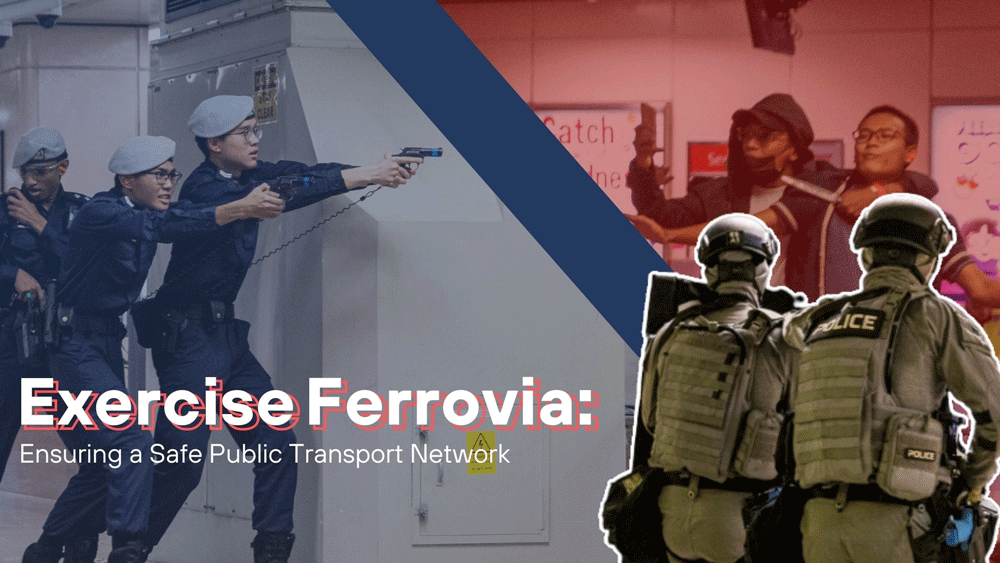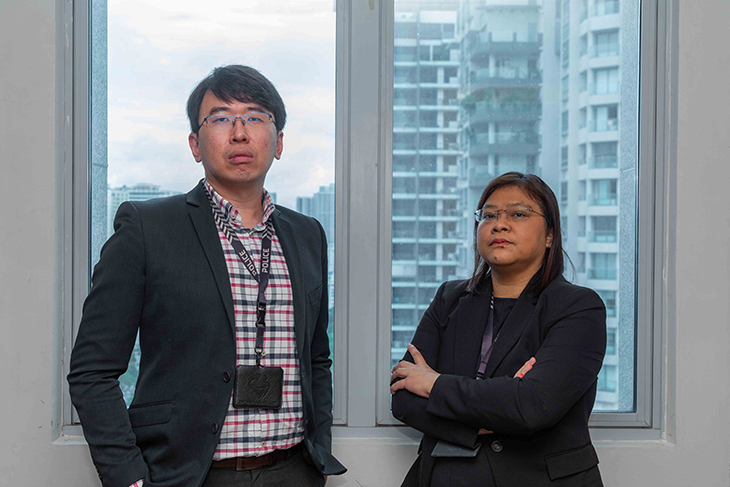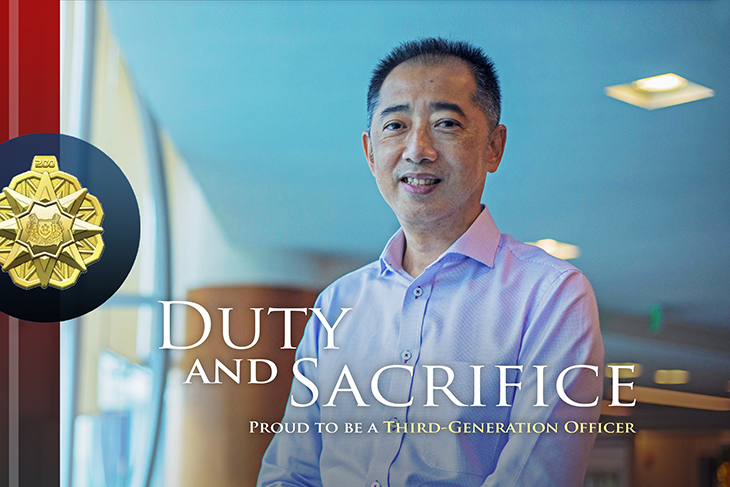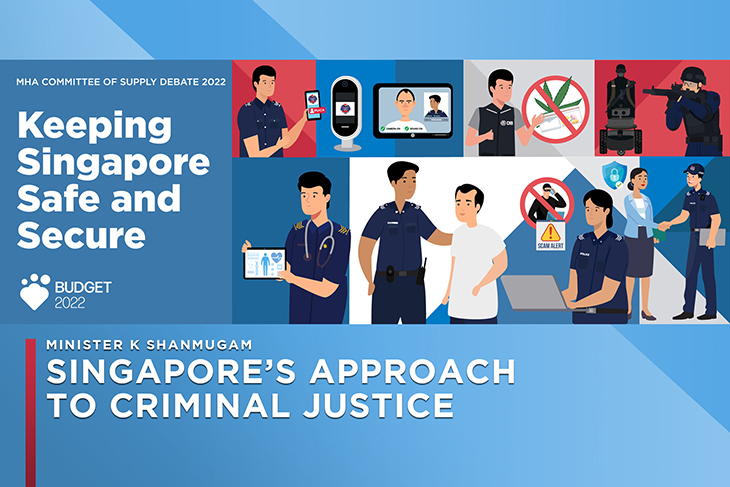
At the
Committee of Supply (COS) Debate in Parliament on 3 March, Minister for Home Affairs Mr K Shanmugam addressed the recent judgement on the constitutional challenge to s377A of the Penal Code, and spoke about Singapore’s approach to criminal justice. Explaining that the justice system was based on our needs, values and societal context, he focused on two issues: the death penalty and our approach to rehabilitation.
In response to a suggestion for an independent ombudsman to check senior Government officials in respect to foreign influence, Minister Shanmugam said the current process works and that replicating an independent investigative mechanism will not solve the problem of checking the checkers.
Here are five key points from Minister Shanmugam’s speech:
1. Court Judgement on s377A
The Government’s stand on s377A remains unchanged from 2007 when the Penal Code was amended: Singapore is an inclusive society where different views and practices are respected and tolerated, and hence no proactive enforcement will be taken.
LGBT+ groups, like any other groups, are entitled to live peacefully, and are protected under the Maintenance of Religious Harmony Act.
The latest judgement by the Court of Appeal is based on the Government’s approach towards striking a balance between preserving the legislative status quo whilst accommodating the concerns of those directly affected by the legislation.
Policies also need to evolve to keep abreast of changes in views. We must respect different viewpoints, consider them carefully and talk to different groups. If and when there is a change, it will be done in a way that avoids a sudden, destabilising change in social norms and public expectations.
Socially charged issues such as s377A call for continued discussion and open-ended resolution within the political domain, where we can forge consensus, rather than in win-lose outcomes in court. In this way, we can accommodate divergent interests, avoid polarisation and facilitate incremental change.
2. The Deterrent Effect of the Death Penalty
The impact of the death penalty on serious crimes is clear: since its introduction for kidnapping in 1961, firearms robbery in 1973 and opium trafficking in 1990, such offences have fallen significantly.
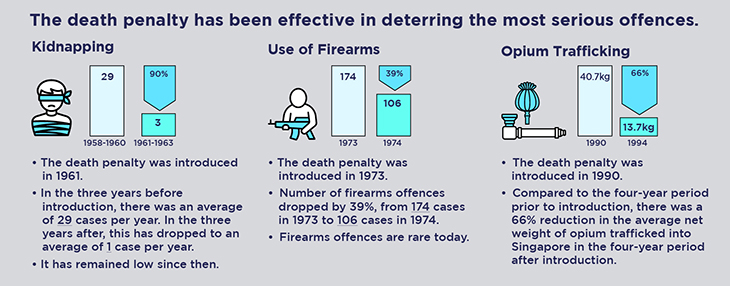
Furthermore, convicted drug traffickers who were aware of the death penalty trafficked an amount below the threshold that carries the death sentence, as a 2018 study by the
Ministry of Home Affairs (MHA) found.
 3. Studies Support the Death Penalty’s Effect on Safety in Singapore
3. Studies Support the Death Penalty’s Effect on Safety in Singapore
A 2021 study of residents in regional countries found that 82% believed the death penalty makes people not want to commit serious crimes in Singapore, while 83% believed the death penalty makes people not want to traffic substantial amounts of drugs into Singapore.
Over half of the respondents, at 69%, also believed the death penalty is more effective in discouraging people from committing serious crimes, compared to life imprisonment.

Singaporeans also support the death penalty. A study in 2019 found that 80% agreed or strong agreed that death penalty had been able to deter serious crimes. In another 2021 survey, preliminary findings indicated similar sentiments.

Hence, Singapore’s approach to the death penalty works for us, and continues to be relevant in our context.
4. Our Approach to Rehabilitation
MHA invests significant resources in rehabilitation for the long-term safety and security of society, as well as to help inmates lead crime-free lives. This has resulted in Singapore’s two-year recidivism rate being the lowest it has been, and one of the lowest internationally.
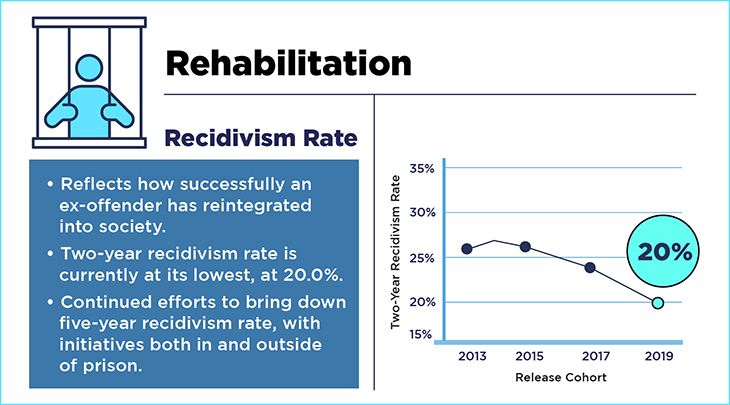
When inmates are admitted to prison, their risks and needs will be identified, and they will undergo appropriate programmes to address them. These are the four main programmes:
i. Psychology-based Correctional Programmes: Psychologists and rehabilitation specialists customise intervention programmes for inmates who have addiction problems, violent or sexual tendencies, or other mental health needs.
ii. Family Programmes: To equip inmates with effective communication skills to engage their loved ones, and strengthen bonds, as family support is essential in the rehabilitation and reintegration journey.
iii. Skills Training and Employment Assistance: Academic (GCE, diploma and degree) programmes, Train and Place & Grow (TAP & Grow) Initiative, and other courses such as digital skills training aim to equip inmates with know-how to secure jobs after release, which reduces the risk of re-offending.
iv. Community Corrections: There was double the number of inmates emplaced on community-based programmes compared to five years ago, and those who completed these programmes have a lower risk of re-offending.
5. Current Process Works to Check on Senior Government Officials for Foreign Influence
The Government has added on checks on itself over the years. Current appointments for senior Government officials are carefully constructed so that there is a legal basis to the process of investigations into improper conduct. To replicate an investigative mechanism outside the Government will be costly and will not address the fundamental question of "who guards the guards?"
MHA Committee of Supply (COS) Debate 2022
Read the COS 2022 speech delivered by Minister Mr K Shanmugam. For more info on MHA COS 2022, visit the MHA COS 2022 webpage.









